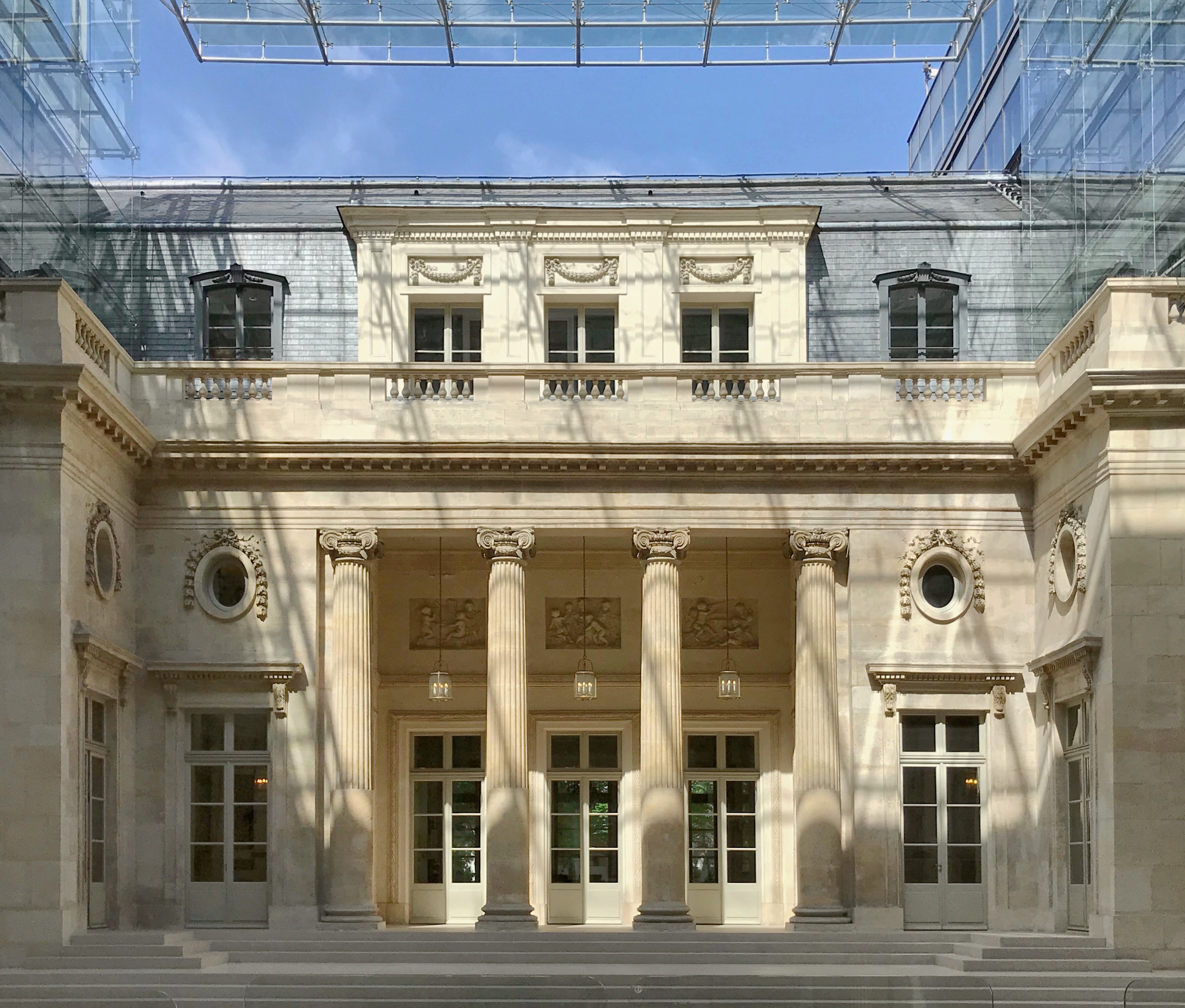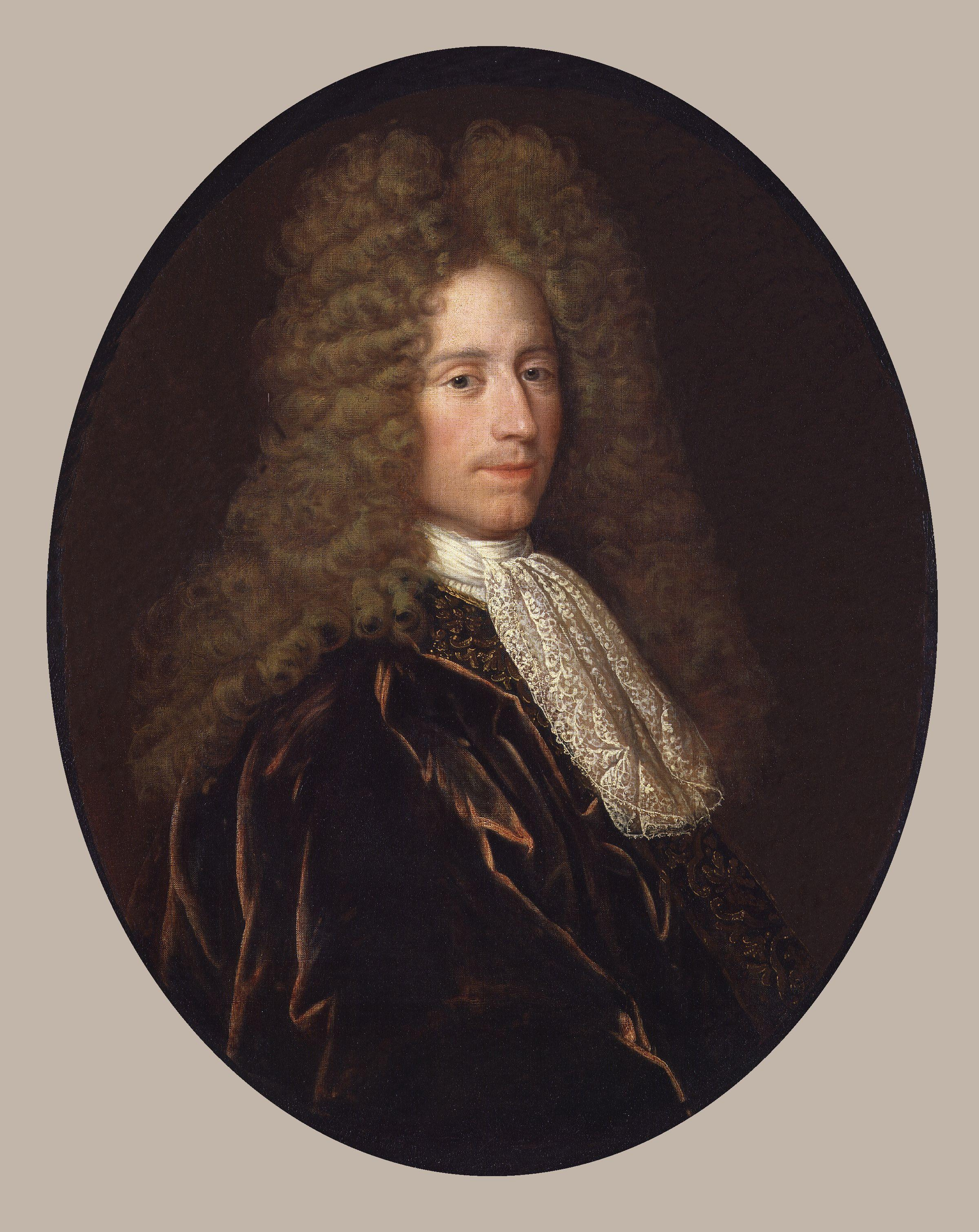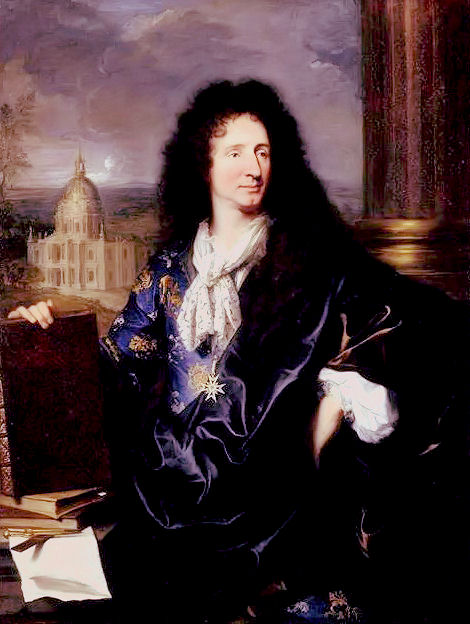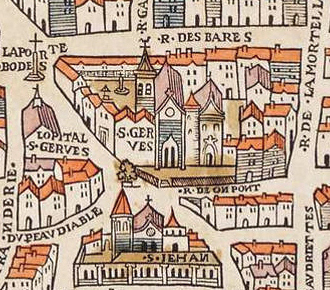|
Église Saint-Roch
The Church of Saint-Roch (french: Église Saint-Roch) is a 17th-18th-century French Baroque and classical style church in Paris, dedicated to Saint Roch. It is located at 284 rue Saint-Honoré, in the 1st arrondissement. The current church was built between 1653 and 1740. The church is particularly noted for its very exuberant 18th century chapels decorated with elaborate Baroque murals, sculpture, and architectural detail. In 1795, during the later states of the French Revolution, the front of the church was the site of the 13 Vendémiaire, when the young artillery officer Napoleon Bonaparte fired a battery of cannon to break up a force of Royalist soldiers which threatened the new revolutionary government. History Construction In 1521, the merchant Jean Dinocheau had a chapel built on the outskirts of Paris, which was dedicated to Saint Susanna. In 1577, his nephew Etienne Dinocheau had it extended into a larger church. In the early 18th century, with the beginning of t ... [...More Info...] [...Related Items...] OR: [Wikipedia] [Google] [Baidu] |
Catholic Church
The Catholic Church, also known as the Roman Catholic Church, is the largest Christian church, with 1.3 billion baptized Catholics worldwide . It is among the world's oldest and largest international institutions, and has played a prominent role in the history and development of Western civilization. O'Collins, p. v (preface). The church consists of 24 ''sui iuris'' churches, including the Latin Church and 23 Eastern Catholic Churches, which comprise almost 3,500 dioceses and eparchies located around the world. The pope, who is the bishop of Rome, is the chief pastor of the church. The bishopric of Rome, known as the Holy See, is the central governing authority of the church. The administrative body of the Holy See, the Roman Curia, has its principal offices in Vatican City, a small enclave of the Italian city of Rome, of which the pope is head of state. The core beliefs of Catholicism are found in the Nicene Creed. The Catholic Church teaches that it is the ... [...More Info...] [...Related Items...] OR: [Wikipedia] [Google] [Baidu] |
Jacques Lemercier
Jacques Lemercier (c. 1585 in Pontoise – 13 January 1654 in Paris) was a French architect and engineer, one of the influential trio that included Louis Le Vau and François Mansart who formed the classicizing French Baroque manner, drawing from French traditions of the previous century and current Roman practice the fresh, essentially French synthesis associated with Cardinal Richelieu and Louis XIII. Life and career Lemercier was born in Pontoise. He was the son of a master mason, probably Nicolas Lemercier, one of a large interrelated tribe of professionals. Profiting by a voyage to Italy with a long stay in Rome, presumably from about 1607 to 1610, Lemercier developed the simplified classicizing manner established by Salomon de Brosse, who died in 1636, and whose ''Palais du Luxembourg'' for Marie de Medici Lemercier would see to completion. On his return to France, after several years working as an engineer building bridges, his first major commission, however, was t ... [...More Info...] [...Related Items...] OR: [Wikipedia] [Google] [Baidu] |
Crucifixion
Crucifixion is a method of capital punishment in which the victim is tied or nailed to a large wooden cross or beam and left to hang until eventual death from exhaustion and asphyxiation. It was used as a punishment by the Persians, Carthaginians and Romans, among others. Crucifixion has been used in parts of the world as recently as the twentieth century. The crucifixion of Jesus of Nazareth is central to Christianity, and the cross (sometimes depicting Jesus nailed to it) is the main religious symbol for many Christian churches. Terminology Ancient Greek has two verbs for crucify: (), from (which in today's Greek only means "cross" but which in antiquity was used of any kind of wooden pole, pointed or blunt, bare or with attachments) and () "crucify on a plank", together with ( "impale"). In earlier pre-Roman Greek texts usually means "impale". The Greek used in the Christian New Testament uses four verbs, three of them based upon (), usually translated "cross ... [...More Info...] [...Related Items...] OR: [Wikipedia] [Google] [Baidu] |
Étienne-Louis Boullée
Étienne-Louis Boullée (12 February 17284 February 1799) was a visionary French neoclassical architect whose work greatly influenced contemporary architects. Life Born in Paris, he studied under Jacques-François Blondel, Germain Boffrand and Jean-Laurent Le Geay, from whom he learned the mainstream French Classical architecture in the 17th and 18th century and the Neoclassicism that evolved after the mid century. He was elected to the Académie Royale d'Architecture in 1762 and became chief architect to Frederick II of Prussia, a largely honorary title. He designed a number of private houses from 1762 to 1778, though most of these no longer exist; notable survivors into the modern era include the Hôtel de Brunoy (demolished in 1930) and the Hôtel Alexandre, both in Paris. His work for François Racine de Monville has apparently also vanished but his probable influence on Monville's own architectural works as seen at the Désert de Retz speaks for itself. Togeth ... [...More Info...] [...Related Items...] OR: [Wikipedia] [Google] [Baidu] |
Robert De Cotte
Robert de Cotte (1656 – 15 July 1735) was a French architect-administrator, under whose design control of the royal buildings of France from 1699, the earliest notes presaging the Rococo style were introduced. First a pupil of Jules Hardouin-Mansart, he later became his brother-in-law and his collaborator. After Hardouin-Mansart's death, de Cotte completed his unfinished projects, notably the royal chapel at Versailles and the Grand Trianon. Biography Born in Paris, Robert de Cotte began his career as a contractor for masonry, working on important royal projects between 1682 and 1685, when he was made a member of the '' Académie royale d'architecture'' and architect of the Court, ranking third in importance after Mansart's seldom-credited assistant François Dorbay. On his return to France after a six-month sojourn in Italy (1689–1690), in the company of Jacques Gabriel, he became the director of the Manufacture des Gobelins, where not only the famous tapestries, ... [...More Info...] [...Related Items...] OR: [Wikipedia] [Google] [Baidu] |
John Law (economist)
John Law (pronounced in French in the traditional approximation of ''Laws'', the colloquial Scottish form of the name; 21 April 1671 – 21 March 1729) was a Scottish economist who distinguished money, a means of exchange, from national wealth dependent on trade. He served as Controller General of Finances under the Duke of Orleans, who was regent for the juvenile Louis XV of France. In 1716, Law set up a private Banque Générale in France. A year later it was nationalised at his request and renamed as Banque Royale. The private bank had been funded mainly by John Law and Louis XV; three-quarters of its capital consisted of government bills and government-accepted notes, effectively making it the nation's first central bank. Backed only partially by silver, it was a fractional reserve bank. Law also set up and directed the Mississippi Company, funded by the Banque Royale. Its chaotic collapse has been compared to the 17th-century tulip mania in Holland. The Mississippi bub ... [...More Info...] [...Related Items...] OR: [Wikipedia] [Google] [Baidu] |
Jules Hardouin-Mansart
Jules Hardouin-Mansart (; 16 April 1646 – 11 May 1708) was a French Baroque architect and builder whose major work included the Place des Victoires (1684–1690); Place Vendôme (1690); the domed chapel of Les Invalides (1690), and the Grand Trianon of the Palace of Versailles. His monumental work was designed to glorify the reign of Louis XIV of France. Biography Born Jules Hardouin in Paris in 1646, he studied under his renowned great-uncle François Mansart, one of the originators of the classical tradition in French architecture; Hardouin inherited Mansart's collection of plans and drawings and added Mansart's name to his own in 1668. He began his career as an entrepreneur in building construction, in partnership with his brother Michel, but then decided in 1672 to devote himself entirely to architecture. In 1674 he became one of the group of royal architects working for Louis XIV. His first important project was the Château de Clagny, built for the King's consort, M ... [...More Info...] [...Related Items...] OR: [Wikipedia] [Google] [Baidu] |
Council Of Trent
The Council of Trent ( la, Concilium Tridentinum), held between 1545 and 1563 in Trent (or Trento), now in northern Italy, was the 19th ecumenical council of the Catholic Church. Prompted by the Protestant Reformation, it has been described as the embodiment of the Counter-Reformation."Trent, Council of" in Cross, F. L. (ed.) ''The Oxford Dictionary of the Christian Church'', Oxford University Press, 2005 (). The Council issued condemnations of what it defined to be heresies committed by proponents of Protestantism, and also issued key statements and clarifications of the Church's doctrine and teachings, including scripture, the biblical canon, sacred tradition, original sin, justification, salvation, the sacraments, the Mass, and the veneration of saints.Wetterau, Bruce. ''World History''. New York: Henry Holt and Company, 1994. The Council met for twenty-five sessions between 13 December 1545 and 4 December 1563. Pope Paul III, who convoked the Council, oversaw the ... [...More Info...] [...Related Items...] OR: [Wikipedia] [Google] [Baidu] |
Church Of The Gesù
, image = Church of the Gesù, Rome.jpg , imagesize = , caption = Giacomo della Porta's façade, precursor of Baroque , mapframe = yes , mapframe-caption = Click on the map for a fullscreen view , mapframe-zoom = 12 , mapframe-marker = religious-christian , coordinates = , location = 54 Piazza del Gesu, Rome , country = Italy , denomination = Catholic , website = , former name = , bull date = , founded date = , founder = , dedication = , dedicated date = , consecrated date = 1584 , relics = , status = Mother church of the Society of Jesus, titular church; titular church , functional status = Active , heritage designation = , designated date = , architect = , style = , years built = , gro ... [...More Info...] [...Related Items...] OR: [Wikipedia] [Google] [Baidu] |
Saint-Gervais-Saint-Protais
Saint-Gervais-Saint-Protais () is a Roman Catholic parish church located in the 4th arrondissement of Paris, on Place Saint-Gervais in the Marais district, east of City Hall (Hôtel de Ville). The current church was built between 1494 and 1657, on the site of two earlier churches; the facade, completed last, was the first example of the French baroque style in Paris. The organists of the church included Louis Couperin and his nephew François Couperin, two of the most celebrated composers and musicians of the Baroque period; the organ they used can still be seen today. The church contains remarkable examples of medieval carved choir stalls, stained glass from the 16th century, 17th century sculpture, and modern stained glass by Sylvie Gaudin and Claude Courageux. Saint-Gervais was a parish church until 1975, when it became the headquarters of the Monastic Fraternities of Jerusalem. History A church dedicated to Saints Gervasius and Protasius, two Christian martyrs from Mila ... [...More Info...] [...Related Items...] OR: [Wikipedia] [Google] [Baidu] |

.jpg)



.jpg)



.jpg)
